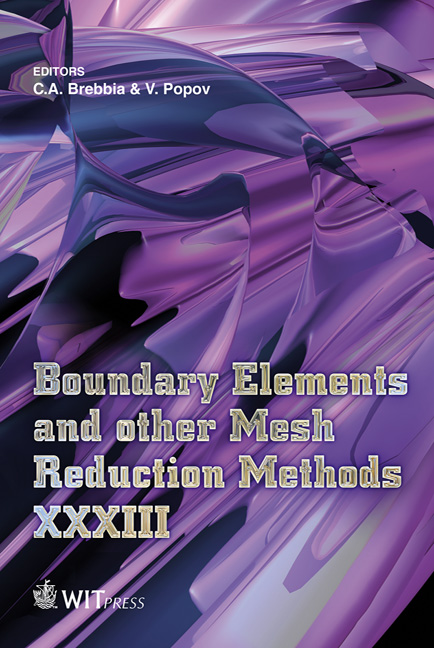The Radial Basis Integral Equation Method For 2D Helmholtz Problems
Price
Free (open access)
Transaction
Volume
52
Pages
12
Page Range
321 - 332
Published
2011
Size
450 kb
Paper DOI
10.2495/BE110281
Copyright
WIT Press
Author(s)
H. Dogan & V. Popov
Abstract
A meshless method for the solution of 2D Helmholtz equation has been developed by using the Boundary Integral Equation (BIE) combined with Radial Basis Function (RBF) interpolations. BIE is applied by using the fundamental solution of the Helmholtz equation, therefore domain integrals are not encountered in the method. The method exploits the advantage of placing the source point always in the centre of circular sub-domains in order to avoid singular or near-singular integrals. Three equations for two-dimensional (2D) or four for three-dimensional (3D) potential problems are required at each node. The first equation is the integral equation arising from the application of the Green’s identities and the remaining equations are the derivatives of the first equation in respect to space coordinates. RBF interpolation is applied in order to obtain the values of the field variable and partial derivatives at the boundary of the circular sub-domains, providing in this way the boundary conditions for solution of the integral equations at the nodes (centres of circles). The accuracy and robustness of the method has been tested on some analytical solutions of the problem. Two different RBFs are used, namely ( ) 2 ln( ) 1 1 f R R R x y and ( ) 4 ln( ) 2 2 1 2 f R R R x y xy x . The latter has been found to produce more accurate results. Keywords: meshless method, 2D Helmholtz equation, circular sub-domains, radial basis functions. 1 Introduction The 2-D modelling of acoustics has been of significant importance for a variety of engineering problem in areas such as ultrasonics, microfluidics, aeoracoustics, etc. The numerical modelling of the problem is essential in case a complete
Keywords
meshless method, 2D Helmholtz equation, circular sub-domains, radial basis functions





